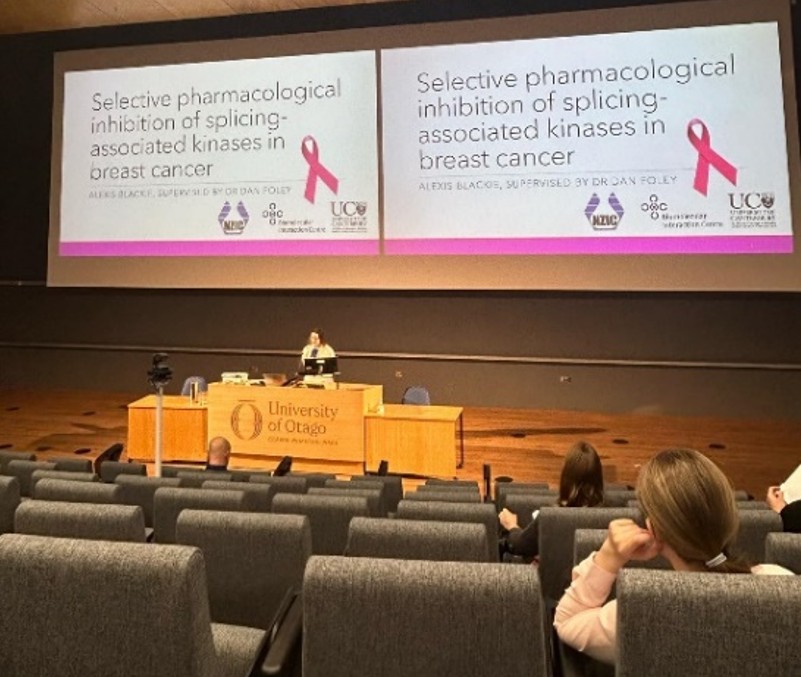The October issue of Chemistry in New Zealand introduced the initiative ‘Chemistry in New Zealand at your fingertips’ (Chemistry in New Zealand, 2022, 86(4), 178-181). This aims to transform the current quarterly publication into an online platform and has spurred motivation to expand the audience to the wider public. Teachers and students at secondary schools across the motu are one such group that could benefit from access to chemistry research conducted in Aotearoa New Zealand, to inform or be informed of the options in our own backyard but also to improve teaching practice. Being able to ‘see’ yourself in particular professions can motivate students, not only to engage with learning, but hopefully to pursue careers in chemistry.
To focus our efforts on material that is both well received and useful, a survey was conducted in August 2022. The survey was sent out via email to members of the Secondary Chemistry Educators of NZ (SCENZ), with approximately 10% of participants responding (28 of ~290). While acknowledging the low response rate, the information gathered still provides useful guidance as to the direction for this platform to go in the school space. The survey results are summarised in Table 1.

Chemistry in New Zealand was recognised by 64% of those surveyed. Around half of the high school teachers surveyed are at least familiar with CiNZ. The participants agreed (85.7%) that having a SCENZ section on the CiNZ website would be attractive to teachers. With 21.4% of participants not having heard of CiNZ, there is an opportunity for more engagement, and advertising to an extent, if we provide a space for secondary school content. Overall, there is support for CiNZ to be a chemistry hub for educators, or at least for one to exist.
When asked to rank a number of suggestions that may be valuable to each teacher surveyed, three out of six suggestions were preferred over the others. To process these results, for each suggestion the scores were weighted in each option by dividing the population of each Rank (1 – 6) by the rank number, and an average score was calculated.

For example, for ‘Worksheets’:

The suggestions and their corresponding scores are as follows:
Experiments using
Permitted chemicals: 3.07
Mātauranga Māori 2.97
Animations of concepts 2.54
Online interactive activities 1.99
Worksheets 1.96
Competitions 1.82
Therefore, a bank of experiments using chemicals permitted in secondary schools, followed by knowledge or resources on Mātauranga Māori are the two most valuable.
A need for resources on experiments could be due to a shortage of chemistry-trained technicians and the recent implementation of the Safety and Science/Pūtaiao document. This document details lists of chemicals that are ‘forbidden’ e.g. aromatic amines and phenolic compounds, in contradiction to the permitted chemicals phenolphthalein and fuchsine; those with ‘a greater hazardous nature than educational utility’ e.g. silver nitrate and potassium dichromate, which are virtually essential for teaching redox and precipitation reactions (osmium tetroxide, chromium trioxide and hydrofluoric acid are also on this list that are recognised as having ‘some educational use’); and lastly those with ‘a hazardous nature but with potential educational utility’ e.g. glucose.

The point being raised in this explanation is that for inexperienced chemistry teachers and technicians, adapting to this document requires some guidance and this could provide an opportunity for CiNZ.
As part of the NCEA change package currently underway, Change 2 ‘Mana Ōrite mō te Mātauranga Māori’ or ‘Equal status of Mātauranga Māori’ will be embedded as part of the revised changes of the National Certificate in Education Achievement (NCEA) but to what extent it will appear in the science curriculum is still to be decided. The high score of Mātauranga Māori probably indicates a lack of exposure to Mātauranga Māori by many educators, and/or the implementation of the revised achievement standards in chemistry and biology starting in 2024. Having an online resource may provide educators with the confidence to prepare lessons in this space, noting of course that this would require consultation with Mātauranga experts from iwi and hapū.
Animations illustrating concepts at the sub-micro scale, such as polarity, or the attractive forces between particles is also valuable. StudyPass® started to release visually appealing graphical content to explain some concepts but due to lack of funding and interest in what was a busy year for teachers, this project will not continue. Content like this, or links published onto the website, could be useful in helping students ‘see the unseeable’ and grasp the concepts at NCEA Levels 2 and 3.
When asked for a preference on what the focus of resources should be for an online CiNZ, all the options provided were favourable. However, there was a higher preference for those pertaining to the senior students (NCEA Achievement standards). What was pleasing is that there is a preference for NZ chemistry research, which aligns with our work tailoring CiNZ articles for secondary school students. Mātauranga Māori was also highlighted once again.
The teachers were then asked what other non-curriculum areas of need would be useful and five suggestions were provided. Advice on the disposal of chemical waste was popular, as the high costs of removal, particularly for forbidden chemicals or others such as lead and organic residues, make it difficult for schools. This can lead to the storage and build up of these chemicals over years. Five teachers chose ‘All of the above’ suggesting that teachers need professional development or at least resources relating the handling, storage, treatment, and disposal of chemicals, as well as where to purchase less expensive chemicals.
Other than the pre-prepared suggestions, those surveyed also suggested highlights of research from recent graduates and chemistry academics within NZ, information linking chemistry to various career pathways, information about upcoming professional development and tailoring content from Education in Chemistry (RSC) to NCEA such as addressing misconceptions, relevant practical experiments and having a simple and user-friendly experience. CiNZ online has the potential to bridge secondary school science learning to tertiary and beyond.
Chemistry in New Zealand is a recognisable platform and the survey results indicate that an online version could be attractive as a resource to help and educate teachers and students alike. CiNZ would have an edge if it included in-demand aspects such as experiments using school compliant chemicals, approved content relating to Mātauranga Māori and animations to explain concepts at the sub-microscale.
It would be beneficial to teachers and students if CiNZ had content on the work of recent graduates and NZ research in general that is easy to read for students and relates to the curriculum. This could enable students to see what’s available if they pursue chemistry further. CiNZ at your fingertips also has an opportunity to provide information on how to handle, store, dispose and possibly reuse chemicals for science technicians. Lastly, by engaging the public, chemistry within Aotearoa New Zealand can literally be at their fingertips.





